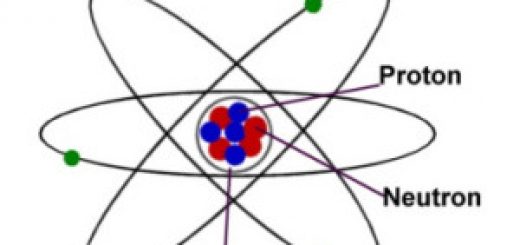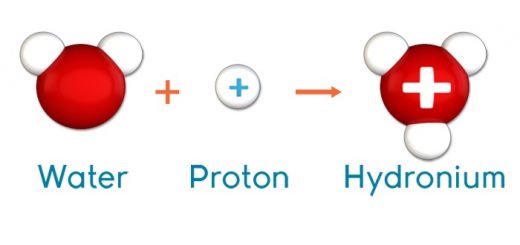Classification of elements in Long-form periodic table, Ionization Energy and Oxidation numbers
Elements are arranged in ascending order of their atomic number and according to their electronic configurations, the sequence of elements agrees with the Auf-bau principle, The long-form periodic table is classified into 4 blocks which are: S-block elements, P-block elements, d-block elements, and f-block elements.
Modern periodic table
The elements are arranged in ascending order of their atomic numbers forming a table of 18 vertical columns and 7 horizontal periods, To indicate the type of the element: S, P except zero-group is a representative element or main group element, zero group is a noble gas, d is the main transition element, and f is the inner transition element.
To indicate the position of the element in the periodic table: The number of periods is the highest principal quantum number in the electronic configuration, (The number of the period = number of the last S), Number of the group is the number of valency electrons (electrons in the outer energy level).
All elements in group VII-A are called halogens, The electronic configuration of their outer sublevel is nP5, they are diatomic-monovalent, Seven non-metallic elements are diatomic molecules at room temperature (H2, N2, O2, F2, Cl2, Br2, and I2).
Elements in the zero-group are called noble gases: (2He, 10Ne, 18Ar, 36Kr, 54Xe, 86Rn), they are monoatomic and the electronic configuration of the outer sublevel in the noble gas is nP6 except 2He (1S²), The maximum number of electrons which sublevels can take is S2, P6, d10, F14, The sequence of energy levels are:
1S<2S<2P<3S<3P<4S<3d<4P<5S<4d<5P<6S<4F<5d<6P<7S<5F<6d<7P
The electronic configuration becomes more stable when the last sublevel is filled with electrons as S2 P6 d10 F14, The last sublevel is half filled with electrons as P3 d5 F7and the last sublevel is empty as d0 F0, Hund’s rule states that no electron paring takes place in a given sublevel until each orbital contains one electron.
Electrons occupy the sublevel of lower energy first and then the higher energy, All elements in the same group are similar in properties, nP6 is the zero group, d6, d7and d8 are called group VIII, d9 is called group I-B, d10 is called group II-B, The long form periodic table is classified into four blocks:
S-block elements
S-block elements (nS1→2) are placed in the left-hand block of the table, the outermost electrons occupy the S-sublevel, It consists of two groups of elements, I-A and II-A, since the S-sublevel consists of one orbital filled with 2 electrons, The electronic configuration of group I-A is nS¹ and group II-A is nS², where n is the number of outer energy level and the number of periods at the same time.
P-block Elements
P-block Elements (nS2, nP1→6) are placed in right-hand block of the table, the outermost electrons occupy the p-sublevel, They are six groups (III-A, IV-A, V-A, VI-A, VII-A, and group number zero of noble gases, Since the P-sublevel consists of 3 orbitals which are filled with 6 electrons.
d-block Elements
d-block Elements [nS2, (n−1)d1→10]: (Main Transition elements) are elements in which the sublevel d is successively filled with increasing atomic number, They lie in 10 vertical columns since the d-sublevel consists of 5-orbitals filled with 10 electrons, Ten vertical columns are represented by 8 groups (seven of which belong to group B) and the other three belong to group VIII, They are divided into 4 series which are:
- 1st Transition series includes the elements in which the sublevel 3d is filled successively, It consists of 10 elements, It is placed in the 4th period, It starts by scandium 21Sc (3d¹) and ends with zinc 30Zn (3d10).
- 2nd Transition series includes the elements in which the sublevel 4d is filled successively, It consists of 10 elements, It is placed in the 5th period, It starts by yttrium 39Y (4d¹) and ends with cadmium 48Cd (4d10).
- 3rd Transition series includes the elements in which the sublevel 5d is filled successively, It consists of 10 elements, It is placed in the 6th period, It starts by lanthanum 57La (5d¹) and ends with mercury 80Hg (5d10).
- 4th Transition series includes the elements in which the sublevel 6d is filled successively, It consists of 10 elements and it is placed in the 7th period.
Group VIII is not classified as group B due to the absence of elements similar in properties in the main group, Elements of group II-B are called post-transition elements.
f-block elements
f-block elements (Inner transition elements) are the elements in which the sublevel f is successively filled with increasing atomic number and classified into two series Lanthanides and actinides.
Ionization Energy
Ionization Energy is the amount of energy required to remove the most loosely bound electron completely from the isolated gaseous atom (Endothermic), it is possible to remove one, two, three or more electrons from the atom, so, there is First, second, and third ionization potential.
First ionization potential is the energy required to convert an atom to an ion with one positive charge.
M → M+ + e¯
The second ionization potential is the energy required to convert the ion with one positive charge into an ion with two positive charges.
M+ → M+2 + e¯
The third ionization potential is the energy required to convert the ion with two positive charges into an ion with three positive charges.
M+2 → M+3 + e¯
For the same element, the 3rd IP > 2nd IP > 1st IP for the same element due to the effect of positive charge increases, Group 2A nS² filled (stable) high IP, Group 5A nP3 half filled stable high IP, Group Zero nP6 completely filled (stable) high IP.
Oxidation numbers
The oxidation number is the positive or negative charge of the ion or the atom in the compound as the ionic or covalent compound.
- Neutral molecule: the sum of oxidation numbers = zero
- Charged molecule (radical): the sum of oxidation numbers = carried charge
Hydroxy compounds, Rules for calculating the oxidation numbers
Radius property, Ionization potential, Electron affinity and Electronegativity
Transition elements and Economic importance of elements of the first transition series



